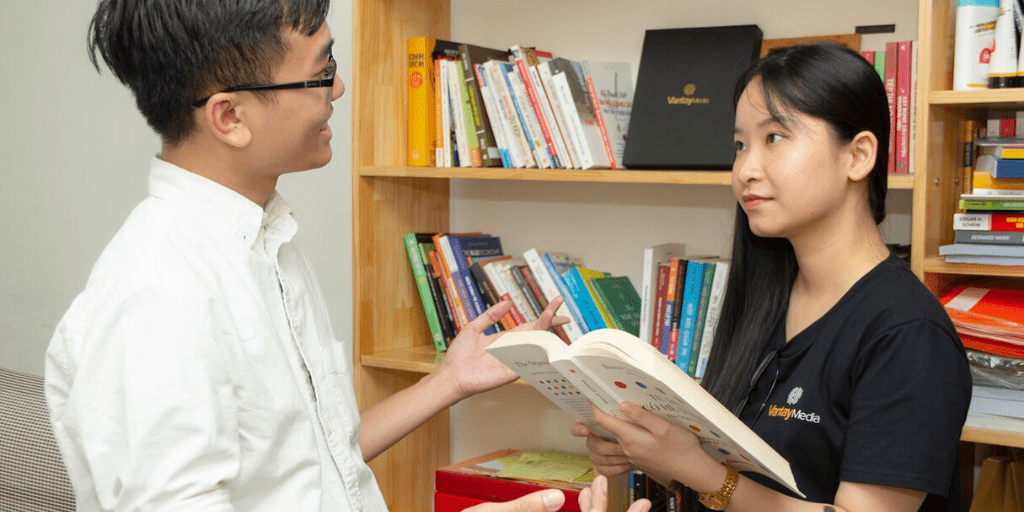Unstunting Growth: (Realistic) Professional Development in TEFL
This article is designed to provide ideas and general guidelines for overseas teachers in our industry who have realized a fundamental truth – counterparts in both public and private institutions in our home countries are often receiving more growth opportunities as educators. Unless you’re working in an institution that is somewhat summit-adjacent on Mount TEFL, you may have become to a certain extent conditioned not to expect a lot of support to better yourself and your professional abilities. It shouldn’t be this way, and it shouldn’t be something any of us become comfortable with.
TEFL Professional Development Sites, Groups, and Organisations
This situation is made worse by short-term contracts, a revolving door of expatriating and repatriating teachers, as well as less than reputable characters on both the employer and employee sides. Long story short, our professional industry can get pretty unprofessional at times. While it would be great to change things on a broader level, this series is designed to provide options for teachers wanting to take charge of their professional development.
Part 1 – Peer Observations
A strategy I like to use with my students is a ‘one for all’ activity- namely, that if one student knows something, they all should. By starting with individual students creating questions (for example, the meaning of a new vocabulary item), students then peer-question in increasingly larger groups until all students have been asked. This means that the only time I should need to get involved is if not a single student in the class knows the answer, which is rare. As well as being a student-centered approach, I find this also helps to build a strong learning community in the classroom.
I don’t see why teaching practice should be any different.
While many see professional development as something like a seminar or workshop, often delivered by an external provider and tacked on to the end of the day, or sandwiched between various administrative tasks and teaching periods, it doesn’t have to be this way. A report commissioned by the Gates foundation also shows that, unsurprisingly, that isn’t what teachers want.
Teachers want to feel part of a learning community rather than as autonomous units, with this being the report’s single highest category for both net dissatisfaction, and where teachers feel priority should be given. It’s remarkable considering fixing this doesn’t take more money, just time and the right prioritization. While there isn’t one magic solution to build up a culture of self-reflection and peer-based learning for teachers in schools or other institutions, there are several things that educators can do to ensure the peer observation process yields maximum benefit for both teachers and students.
It’s actually about you, not them.
The ‘reflective approach’ to peer observations helps to mitigate the main criticism – that if mishandled, this practice can turn into a series of unhelpful and mutually congratulatory sessions, or even worse, inspire fear and anxiety. Teachers should approach observing their colleagues’ classes as a way to improve on their practice, rather than improving the teacher they’re observing. It can often involve checking your ego at the door and actively hoping you’ll see something that can inspire you and change one element of your practice.
Be prepared, but be flexible.
Using guiding questions while observing colleagues can help to add structure and purpose to the process. Some examples may be, ‘does this teacher arrange student seating different than I would? If yes, how does this impact the way students interact?’ or ‘what routines are evident in the classroom?’ Some teachers may prefer to have these questions enlightened from areas of their own genuine or perceived weakness. However, it’s also essential to be prepared to be surprised by something a teacher does, or something that you weren’t necessarily looking for. The most valuable experience I’ve had during peer observation was to see how another teacher had a) anticipated struggles some students were going to have with the material, and b) pre-prepared questioning aimed to guide the students from Point A to Point B in a way that felt natural and fulfilling for them. I’ve used this philosophy to help plan and prepare for lessons many times ever since.
This is not coaching.
Coaching has its time and place, but the above example took place while I was observing a teacher actually junior to me. It would’ve been comfortable in that situation to feel like I had little to learn in this situation, and instead, look for weaknesses to address with her afterward. By sticking to the ‘reflective approach,’ we can try to ensure we perceive the lesson and evaluate only through the lens of how it could help us with our practice.
You’ll always learn something.
Even if it seems something you don’t think would work in your classroom, peer observations will always help you to crystalize your philosophy and encourage you to reflect on your teaching style and priorities. Enforcing your positives may help that teacher to reflect on their practice if and when observing you and seeing healthy teaching practice (and subsequent benefits) displayed. Some teachers choose to be more strategic and follow a teacher that is perceived to be strong in an area they want to improve in (group work, behaviour management, etc.).
It’s OK to stray outside your lane.
Unless specifically looking for content-related support, many teachers at my school find value in observing lessons with teachers teaching different kinds of classes, not only because it allows a certain amount of distance from the aforementioned ‘critical evaluation’ aspect that can creep in, but it also allows them to focus more on the mechanics of the lesson, and possibly apply strategies more heavily used in other subjects into their classroom.
Discuss, don’t report.
Feedback sessions following the observation are essential but can very easily become an evaluative process. As discussed, this shouldn’t be the point of peer observation. A way to avoid this is to consider linearly going through what was done at each lesson stage and how activities contributed towards learning outcomes. ‘Why’ questions can be created by the observer throughout the observation session, which can lead to interesting discussions within the feedback session.
You can be strategic.
One major criticism about professional development from the Gates’ report was that teachers felt they had very little say in what sort of professional development they received. The benefit of peer-observation sessions is that it can allow (if possible) a teacher to strategically choose a teacher to observe them that they think could help them with whatever aspect they feel they need help with. However, there is a difference between this and coaching. Reflective peer observation allows the observer to direct both the observation and feedback sessions, while allowing the two colleagues to meet on a more equally respectful ground, thereby understanding that all teachers have areas of natural strengths and weaknesses.
Give it the time it deserves.
Don’t try to fit in a feedback session in a small gap between classes, give it 45 minutes to an hour and be willing to stay that long, knowing that there are benefits of discussing what took place in the lesson at a reasonably detailed level.
Understand the benefits to students.
There are additional benefits to students besides the advantage of having teachers who have reflected considerably on the needs of their students and possess a broader range of skills. While there will usually be a range of styles and routines used by teachers within an institution, certain cream will rise to the top if teacher turnover remains low, and there’s a genuine commitment to teachers learning from their colleagues. That is to say, certain practices that work well in this particular learning context will be adopted by teachers who observe them working well. Routines can be implemented over the space of many years, across multiple classes, and therefore permeate the fabric of the institution.
Reflective Practice – Thomas S C Farrell Interview
Ultimately, successful peer observation can help to address some of the critical areas identified by teachers as a concern in regard to professional development. Firstly, if teachers can successfully self-reflect on areas of weakness, they can base their observation target on what they need to learn. Secondly, there’s an opportunity for teachers to build a strong learning community by encouraging them to discuss and analyze how learners are learning and use each other to continue developing their skills. This idea of creating a learning community will be explored in Part 2 of the series.






